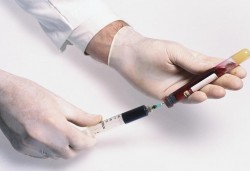One of the questions that is often bothering parents - allocations from sex tract, the so-called vulvovaginitis. What is it?
Content
Vulvovaginit
Vulvovaginit — This inflammatory process in the field of external genital organs and vagina, which in the structure of children's gynecological diseases is most common. But the significance of this problem is determined not only by the frequency. This disease, in the absence of timely diagnosis and proper treatment, may have quite serious remote consequences and cause infertility.

Among girls suffering from vulvovaginitis, the majority of 10 years. This is due to a decrease in the protective properties of the vagina at this age (subtle exhausting mucosa, alkaline reaction of the vaginal content and T. D.). As a result - low resistance to infections. Pre-encouraging factors for the emergence of vulvovaginitis are frequent respiratory diseases, angina, children's infections, urinary tract diseases, intestinal dysbiosis, irrational antibiotic therapy. In short, all that leads to a decrease in immunity.
The development of vulvovaginite leads mechanical, chemical, thermal factors, the ingress of foreign bodies in the vagina, as well as infection.
Vulvovaginitis of noncommunicable nature exist for long. But on their background there “Settlement” The vagina microbes, and infectious vulvovaginitis occurs.
Of the infectious causes of vulvovaginitis, the conditional and pathogenic microflora is most often found,. E. Microorganisms that are normally present in the girl's vagina, but under certain conditions (for example, weakening immunity) are trained pathogenicity. These include staphylococcus, streptococcus, intestinal wand, enterococcus and others.). Often observed mixed infection — reproduction at the same time several types of bad microbes.
In recent years, in the causes of vulvovaginitis, chlamydia, mycoplasma, ureaplasma, a virus of herpes became a significant role. There are also trichomonias, gonorrhea, candidiasis, but mostly in girls older age groups. Often the source of urogenital infections serve parents. Infection occurs during childbirth or contact-domestic pathway (with the use of general hygiene objects and T.D.).
Huge importance in the emergence of vulvovaginitis has hygiene girls. Parents must explain the daughterhood of the importance of compliance with the purity of outdoor genital organs and teach the proper conduct of hygienic events. It should be remembered for thermal and chemical impacts on a delicate mucous membrane, so only weak and warm solutions need to use girls.
Manifestations of vulvovaginitis
The main symptoms of vulvovaginite are the separation from sex tract, redness and itching in the field of external genital organs, burning and soreness when urination. Some vulvovaginites are the nature of the sluggish inflammatory process and are revealed by chance. These include chronic chlamydial, mycoplasma vulvovaginites.
Chronicization of the disease can contribute to the fact that the infection is mainly proceeding during childbirth, but this infection is diagnosed much later.
More acutely arises vulvovaginitis caused by — Small gloves parasitic in the lower intestinal department. The girl among the night wakes up with tears and complaints of pain and itching in the field of external genital organs, creaks at night with teeth and others. Basic treatment with a given vulvivaginate - Conducting antickel therapy, Vagina Sanation.
Often there are vulvovaginites caused by foreign bodies. Children, playing, introduce various small items in the vagina (mosaic, pin, cap from the fountain pen and T.D.). Then, after a while there are abundant flicker discharges with blood admissions, redness of the external genital organs. Children's gynecologist In case of inspection, a foreign body is found and removes it. Then produces washing the vagina with disinfecting solutions.
With the appearance of the above complaints or questions related to the state of the genital organs, it is necessary to consult a doctor for clarification, preferably a gynecologist of children and adolescents.
Children's gynecologist examines the external genital organs of the girl, if necessary, produce vaginoscopy (inspection of the girl's vagina with a special apparatus - a vaginoskop), especially if the foreign body is suspected of a vagina. Then the smears are taken, sowing to the pathogenic flora with the definition of sensitivity to antibiotics, tests for urogenital infections (chlamydia, mycoplasmosis, gonoron, trichomoniasis, gardnerellosis, etc.).
Treatment of vulvovaginitis
After receiving the results of the survey, the doctor prescribes symptomatic treatment (seating, washing the vagina), etiotropic treatment (antibiotic therapy, local use of vaginal sticks, candles, ointments), treatment of concomitant diseases (shanction of foci of infection) and generalifying therapy (multivitamins, immunomodulators, and t.D.). After conducting the main treatment, the normal flora of the girl's vaginal is restored, with the help of various eubiotics (bifidumbacterin, lactobacterin and t.NS.).
Untreated acute vulvovaginite can go into a chronic shape and have adverse effects. With a long flow, vulvovaginites can contribute to the formation of a synech (the battle of the right and left sexual lip between themselves), the formation of polyps, candidal, scar changes in the vagina. These complications in older age can cause violations of the childbearing function.
Thus, in conclusion, I would like to note that the health of the girl largely depends on it and on the degree of awareness of its parents. A healthy lifestyle, which includes proper nutrition, moderate physical exertion, compliance with hygienic rules and timely, if necessary, appeal to the doctor are prevention of gynecological diseases in girls.









